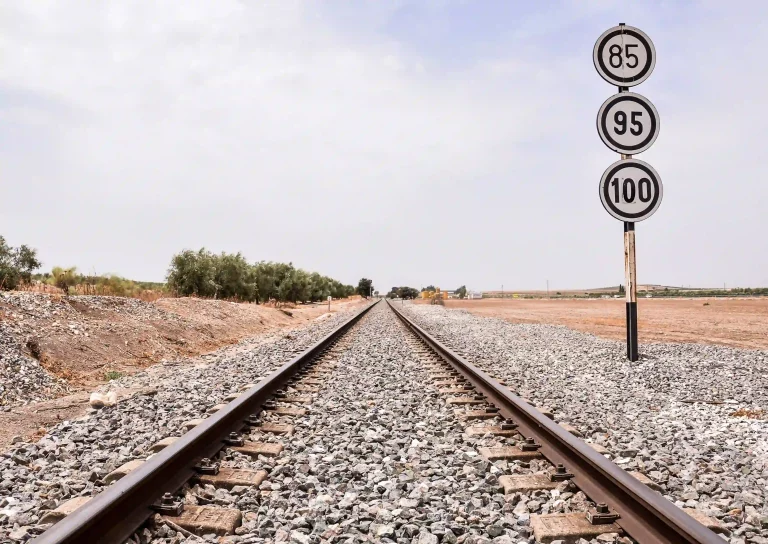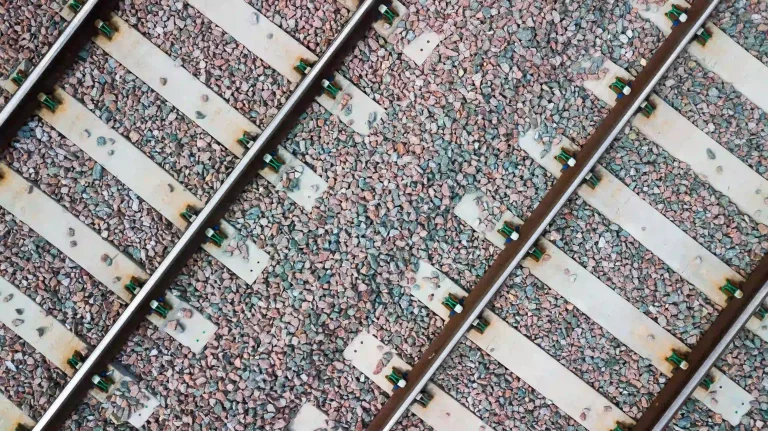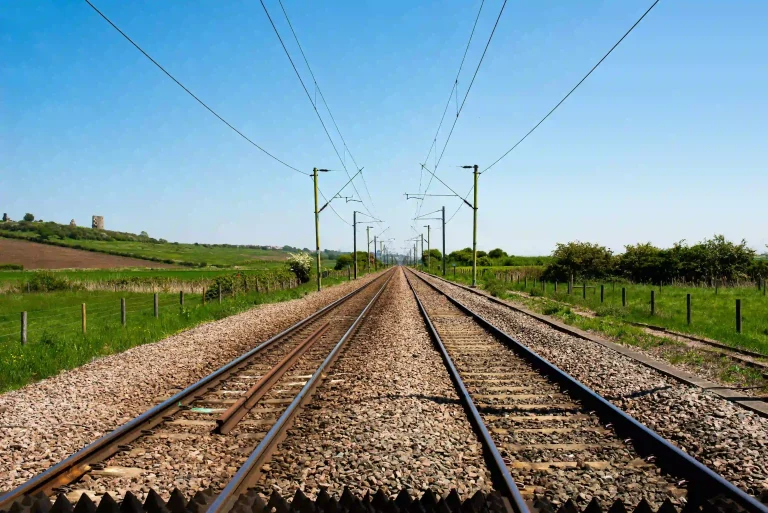Understanding Tension Clamps in Railway Applications
The Role of Tension Clamps
Tension clamps play a pivotal role in railway track systems by securing the rails and maintaining track alignment. These essential components ensure that the rails remain in place under various conditions, from the weight of passing trains to temperature-induced expansions and contractions. Without properly tensioned clamps, the railway infrastructure could face compromised stability, leading to dangerous situations such as derailments.
Types of Tension Clamps Used in Railways
Several types of tension clamps are utilized in railway applications, each designed to meet specific requirements and conditions. Elastic rail clips, for instance, provide flexibility and resilience, making them suitable for high-speed tracks. Bolt and clip assemblies are typically used in heavy freight applications due to their robust nature. Each type must be selected based on the characteristics of the railway, including its operational demands and environmental conditions.
Importance of Correct Tightness in Tension Clamps
Achieving the correct tightness in tension clamps is critical for railway safety and performance. If clamps are too loose, the rails may shift, leading to instability and potential derailments. Conversely, over-tightening can cause stress fractures in the rail or the clamps themselves, compromising the integrity of the entire track system. Proper tightness ensures that the rails are securely fastened while allowing for necessary movements due to thermal expansion and train forces.
SAFE Rail Fastening System (Zhejiang) Co., Ltd.
The company operates under stringent quality and management systems, including ISO9001, ISO14001, and ISO45001, which guide its production processes and performance management. Additionally, SFFST implements the “6S” Management System, ERP Management System, and JIT Production Management Method to maintain high standards of production efficiency and quality control.
SFFST’s automatic tension clamp production line exemplifies its technological prowess. This fully automated line handles all stages of production—from cutting and heating to molding, quenching, tempering, surface treatment, antirust treatment, packaging, and warehousing—ensuring precision and consistency in every product.
Moreover, SFFST is dedicated to innovation and the integration of industry, academia, and market needs. Through collaborations with universities, the company transforms cutting-edge research into practical applications, driving the development of specialized, refined, unique, and new products.
Factors Influencing the Correct Tightness Level
Material Characteristics
Steel Properties
The type of steel used in tension clamps greatly influences the correct tightness level. High-quality steel with appropriate tensile strength is essential to withstand the dynamic forces exerted by passing trains. The hardness and flexibility of the steel determine how well the clamps can hold the rails without deforming. Engineers must consider these properties to ensure the clamps can perform effectively under various operational conditions.
Environmental Conditions Impacting Material Stress
Environmental factors such as temperature fluctuations, humidity, and exposure to corrosive elements can affect the material stress experienced by tension clamps. In colder climates, steel can become brittle, while in hotter environments, it might expand. Humidity and exposure to chemicals can lead to corrosion, weakening the clamps over time. Regular monitoring and adjustments are necessary to account for these variables, ensuring the clamps maintain the correct tightness.
Rail Specifications
Gauge and Bolt Sizes
The gauge and bolt sizes of the rail are critical parameters that determine the appropriate tension for clamps. The gauge, or the distance between the rails, must be strictly adhered to, as deviations can result in unsafe track conditions. In addition, the bolt sizes used to attach the clamps should match the design specifications to secure the rail adequately without causing excess stress on the bolts or clamps.
Load and Stress Requirements
Different railway tracks have varying load and stress requirements based on the types of trains and their frequencies. High-speed passenger trains, freight trains, and mixed-use tracks each require specific tension settings. Engineers must evaluate the load-bearing capacity and the expected stress cycles to ensure that the tension clamps are neither too loose nor too tight, balancing safety, durability, and performance.
By understanding and implementing these factors, railway authorities can ensure that the tension clamps are installed correctly, maintaining the integrity and safety of the railway tracks. Proper installation and maintenance of tension clamps in railway systems are crucial components of railway engineering, helping to mitigate risks and extend the lifespan of the infrastructure.
Installation Processes
Pre-Installation Checks
Pre-installation checks are crucial in ensuring that tension clamps are correctly installed. These checks typically include verifying the compatibility of the clamps with the rail type and ensuring that all components, including bolts and nuts, are in good condition. Before installation, it’s also essential to clean the rail and the clamps to prevent any debris or corrosion that could affect the tightening. Conducting thorough pre-installation checks helps identify potential issues that could compromise the tightness or the overall performance of the clamps once they are in place.
Torque Wrench Utilization and Settings
Using a torque wrench is essential for achieving the correct tightness of tension clamps. Torque wrenches allow for precise application of force, ensuring that clamps are neither over-tightened nor under-tightened. Proper utilization involves setting the wrench to the manufacturer’s recommended torque value, which is usually specified in the installation guidelines. Regular calibration of the torque wrench is also necessary to maintain its accuracy. By adhering to these practices, installers can achieve consistent and reliable clamp tightness, contributing to the safety and durability of the railway tracks.
Techniques for Achieving Optimal Tightness
Standardized Methods
Manufacturer Guidelines for Tightness Levels
Manufacturers provide specific guidelines for the tightness levels of tension clamps, which are based on extensive testing and engineering principles. These guidelines typically include recommended torque values and tightening sequences to ensure optimal performance. Adhering to these guidelines helps prevent common issues such as over-tightening or uneven tightening, which can lead to stress fractures or rail misalignment. Proper adherence to manufacturer guidelines ensures that the clamps function as intended, providing a reliable and secure fastening for the railway tracks.
Industry Standards on Tightening Procedures
In addition to manufacturer guidelines, industry standards provide a framework for achieving consistent and safe clamp tightness across different railway systems. These standards are developed by industry bodies and are based on best practices and empirical data. They often include recommendations on the types of tools to be used, the order of operations during installation, and periodic inspection protocols. Following industry standards helps align practices across various installations, ensuring that all clamps meet the necessary performance criteria.
Precision Tools and Their Usage
Calibration of Torque Wrenches
Calibration of torque wrenches is a critical step in ensuring accurate and consistent tightness of tension clamps. Over time, torque wrenches can drift from their original settings due to wear and tear or environmental factors. Regular calibration involves comparing the wrench’s readings against a known standard and making adjustments as needed. Calibrated torque wrenches help installers apply the correct amount of force, reducing the risk of over-tightening or under-tightening, and ensuring that the tension clamps are properly secured.
Digital Measurement Tools
Digital measurement tools, such as torque sensors and digital calipers, provide enhanced accuracy and ease of use compared to traditional tools. These tools allow for real-time monitoring and precise control over the installation process. For example, digital torque readers can display and record torque values with high precision, enabling installers to adhere strictly to specified limits. Using digital tools can significantly improve the accuracy and consistency of clamp installations, contributing to safer and more reliable railway tracks.
Safety Considerations during Installation
Risk of Over-Tightening and Under-Tightening
Both over-tightening and under-tightening of tension clamps pose significant safety risks. Over-tightening can cause stress fractures in the rail or damage to the clamps, reducing their effectiveness and potentially leading to rail misalignment. On the other hand, under-tightening can result in a loose rail, increasing the risk of track instability and derailment. It’s crucial for installers to recognize the importance of applying the correct torque and to use appropriate tools and methods to achieve precise tightness. Monitoring and adjusting clamp tightness as needed can mitigate these risks and ensure the long-term safety of the railway infrastructure.
Routine Maintenance and Monitoring
Visual Inspections
Routine visual inspections are an essential component of maintaining the proper tightness of tension clamps. These inspections involve checking for signs of wear, corrosion, or loosened clamps that could indicate a problem. Inspectors should also look for any signs of rail movement or misalignment that might suggest inadequate clamp tightness. Regular visual inspections allow for early detection of potential issues, enabling timely maintenance and preventing more severe problems from developing.
Scheduled Retightening Intervals
Scheduled retightening intervals are necessary to maintain the correct tightness of tension clamps over time. Factors such as vibration, temperature changes, and loading cycles can cause clamps to loosen gradually. Establishing a schedule for retightening ensures that clamps remain secure and effective. This schedule should be based on the specific conditions of the railway track, including train frequency, load levels, and environmental factors. By adhering to a regular retightening protocol, railway operators can maintain optimal clamp performance and enhance the safety and reliability of the track system.
Recommended Practices from Industry Experts
Best Practices from Successful Installations
Industry experts often share insights and best practices based on successful installations, providing valuable guidance for achieving optimal clamp tightness. These practices may include specific techniques for pre-installation checks, methods for ensuring even tightening, and recommendations for using advanced tools and technologies. Learning from the experiences of successful projects can help installers avoid common pitfalls and implement proven strategies that lead to safer and more reliable railway tracks.
Common Pitfalls to Avoid
Avoiding common pitfalls in the installation of tension clamps is crucial for ensuring their proper function. Common mistakes include neglecting pre-installation checks, failing to calibrate torque wrenches, and deviating from manufacturer guidelines or industry standards. Additionally, overlooking routine maintenance and monitoring can lead to undetected issues that compromise track safety. Awareness of these pitfalls and taking proactive steps to avoid them can significantly enhance the quality and reliability of tension clamp installations, ensuring the safety and longevity of railway infrastructure.











